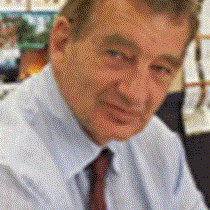Wellington
We approached spectacular Wellington Harbour early in the morning. The day was relatively calm despite David’s warning that the city is known as “windy Wellington.” Folk were relieved. Divided into two groups, each with a local volunteer guide with encyclopaedic knowledge of the downtown area and its environs, we headed north along the wharf before turning inwards, reaching parliament buildings, the national library, the law school (the oldest wooden building in the southern hemisphere) and the national archives, with historical commentary from the guides bringing the area alive.
Then each group entered the Anglican Old St. Paul’s, Wellington’s most magnificent church, where a kind woman from the Historic Places Trust provided some history as to its construction from the early part of this century. Guests marvelled at the beauty and finesse of stained glass work which intersected the totara walls.
From there it was a bus trip which wound up The Terrace, Victoria University of Wellington to the top entrance of the Botanic Gardens beside the cable car. Guests wound their way down paths, which in complete contrast to the bush walks in the more rugged areas, passed trees which had been introduced from various parts of the world. The Lady Norwood Rose Garden was the destination. There was a well-earned break among the roses before re-boarding the buses for the trip to Te Papa, the national museum.
Guests were introduced to guides dressed in spectacular blue and white livery, and given an overview of the various exhibits on the first floor and then escorted around the various exhibits, mostly based around various aspects of New Zealand history.
Guests then travelled to Zealandia, the city’s predator-proofed wildlife sanctuary in the suburb of Karori. Volunteers led them on walking tours in parts of the sanctuary. Reported highlights were sightings of tuatara (the dinosaur-like, slow moving animal whose favourite food is wetas), screeching kaka, and the endangered blue-bodied, red-billed and flightless takahe which was rediscovered in Fiordland in 1947, having been considered extinct for many years. This was the guests’ first opportunity to site this magnificent bird.




